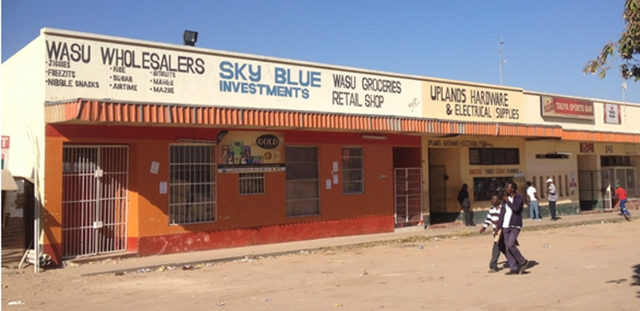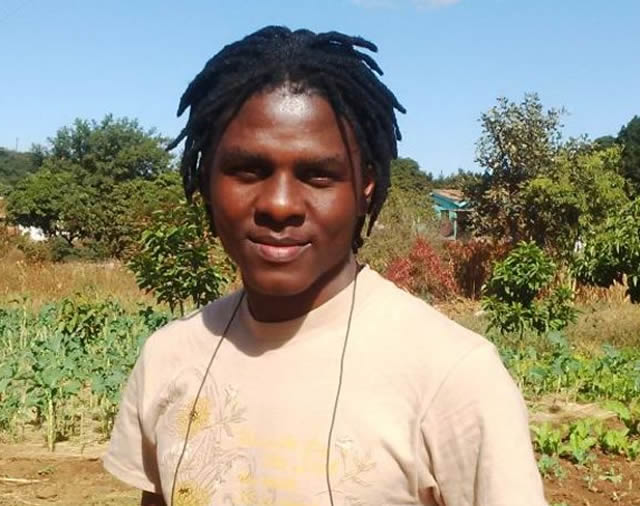Amazing business secrets from indigenous retailers

Charles Dhewa
Grocery shops operated by indigenous people have been part of Zimbabwe’s rural and urban landscape since colonial times. Common names include Machipisa, Mwayera, Mutongerwa, Mutonono, Mutema, Mapuvire, Masamvu, Nsingo, Makhulambila and many others across the country.A couple of business centres have been named after these great entrepreneurs most of whom are still locking business horns with modern supermarkets and shopping malls. In an effort to discover how and why indigenous retailers have survived the onslaught from globalisation and new consumer habits, eMKambo conducted a deep survey across Zimbabwe from January to June 2016 in 13 districts across Zimbabwe.
In addition to individual interviews, knowledge gathering methods included observations, casual discussions with indigenous retailers and their clients such as farmers, consumers and transporters. The survey focused on small independent stores and family-owned business chains who now account for the huge volume of grocery sales in rural areas and high density urban areas. In rural areas, the majority of these entrepreneurs function as agro-dealers supporting both input and output marketing. Many farmers and agricultural traders have borrowed a leaf from these business people.
Some of the emerging perspectives
Based on the survey, eMKambo has developed a solid perspective on factors that have enabled indigenous retailers to compete and survive economic hardships. In urban high density areas and growth points like Gokwe, Murambinda, Mupandawana, Guruve, Muzarabani, Matobo, Mt Darwin, Lupane and Tsholotsho, family-owned retail shops are an integral part of the socio-economic ecosystem.
Growth and resilience is shaped by many factors including the fact that food buying habits are localised and deeply entrenched in relationships. The majority of consumers are accustomed to shopping at informal markets and small neighbourhood grocery stores that offer a familiar selection of commodities. Consumers cannot travel all the way to town to buy a few products.
With little money and income they can get what they want from the local shop. Customer service is anchored on local relationships, culture, totems and kinship ties. The modern supermarket and shopping mall model based on formal advertising cannot beat this relationship-based marketing system.
The essence of retailing in
indigenous communities
Almost all indigenous retailers have mastered the fact that retailing is more about direct selling to individuals, customers and other end-users. Building on this experience, an important part of their business secrets is developing thorough knowledge of their customer base, needs, incomes, gender, age, tastes and preferences. It is in meeting all these aspects that personal relationships are built between indigenous retailers and their customers as well between indigenous retailers in the same community or business centre.
All the retailers interviewed by eMKambo have flexible business models when it comes to decision-making and operating times unlike the formal food chain stores and supermarkets which still stick to the 8am to 6pm grind. Indigenous retailers know that many of their customers want to buy commodities for children going to school and people going to work early in the morning.
Therefore a lot of needs are met well before 8am. They have also become aware that many of their customers want to buy after 5pm when they have come back from their various socio-economic activities. In rural areas, most indigenous retailers have become one-stop business enterprises, with the set up departmentalised into groceries, inputs, clothing, alcohol, etc. They have realised that due to time constraints, most customers do not want to get groceries in one shop and arrange another journey to buy inputs in yet another shop.
Sense of ownership
There is a close relationship between the indigenous owner and the business. This is shown by how risks and profits are shared. The owner is more committed than is the case in big wholesale companies where employees are far removed from the business ownership. Normalising customer relations is often not a practical priority in big companies although their mission statements state the importance of customers.
In small indigenous retail shops, if a customer has a personal issue, s/he can directly meet the owner and the issue is solved. Indigenous retailers are driven more by experience built over many years. On the other hand, in modern wholesalers and blue chip companies, the turnover of employees is the turnover of vital experience.
An indigenous retailer who has been in the business for the past 25 years manages through experience. Knowledge about products is embedded in the owner while in modern wholesale and retail shops, shop assistance cannot provide practical advice on particular products. Indigenous retailers are very good at providing practical advice. In farming communities, many of them are farmers and can advise customers on the performance of inputs.
Most indigenous retailers have established their shops using their own savings (100 percent risk), passion and incomes. They want to prove that they have used their resources in a smart way. The majority have not used loans to build their businesses, so they are not in a hurry or anxious. Because they service a particular Community of Practice, they adhere to a 20 /80 rule where 20 percent of their customers sustain their business while 80 percent of the customers randomly contribute to growth patterns.
The business is planned around the 20 percent whose trends are predictable. For instance, during the Christmas period, they plan their orders based on a well-defined and stable market. This is unlike food chain stores who have no idea how many people will be conducting Christmas shopping.
Low entry barriers and harnessing the power of barter trade
Due to their small size, most indigenous retailers find it easy to enter and exit specific commodity value chains. For those who rent operating space, when competition get hot they simply move to a new lucrative site. Due to the mobility of goods, it may not make sense to build a big structure. On the other hand, big companies tend to be trapped in previously lucrative areas because they have invested in buildings. If you put up an expensive shopping mall in the middle of the congested city and clients are put off by the congestion, you cannot blame the competition for such bad decisions.
To deal with a cash crisis, indigenous retailers exchange commodities with grain, labour and other local valuable commodities. This means, they have another business model as buyers of agricultural commodities as well as processors who own grinding mills. Some have diversified their businesses into retail shop, butchery, bar and grinding mill.
These lines of business supplement each other, providing a fall-back position. Much of this is due to experience. They try to fulfil a complete food basket for a household — providing for the mother, household head and children.
Indigenous version of corporate social responsibility
In almost all the districts covered by the eMKambo survey, local people benefit from personal service provided by the indigenous store owner. Such services include credit and provision of local transport. This has become an important part of cultivating customer loyalty by the retailers. Besides providing transport, they also make funeral contributions and donate to local schools.
Through visible investments in other forms of wealth like livestock, modern houses and farming implements, they inspire local communities to pull themselves out of poverty. Their leadership by example is far more important than what students can learn in business school. They also value human capital investment as shown by how they send their children to school. Their notion of a business growth pattern is not about opening outlets but strengthening the family, the community and acquiring assets.
There is also a very strong network among small retailers at the same business centre. This is seen in how they share stocks. Instead of disappointing a customer who has travelled a long distance, the retailer borrows what the customer wants from a fellow retailer in order to satisfy the customer. They also share transport and containers like crates.
Such ways of co-existing are entirely missing in modern corporate businesses. If you find OK Zimbabwe and TM Supermarkets sharing resources they way described above, eMKambo will buy you a pocket of potatoes. Blue chip companies see each other more as competitors than collaborators on the same economy journey.
A revolution in the making
Given how they have horned their business skills, indigenous retailers can be perfect catalysts for the current transition from brick and mortar business models to commodity and relationship-based business models. The banking sector and institutional investors such as Old Mutual are struggling to understand this reality.
Business is no longer entirely about buildings but what is within those buildings. Indigenous retailers have learnt that in a stable price economy there is no need to keep huge stocks which tend to tie up money. The retailers have become very good at spinning money. With $500 they know what to order as per demand — specific quantities of drinks, bread and other fast movers.
Available resources are used to get orders so that what is in the shop has specific demand. On the other hand, food chain stores and other big wholesalers tend to have millions of dollars tied in commodity stocks. This can be ideal where prices fluctuate frequently. In a stable price economy you do not need to stock that much. In fact, stocking commodities causes cash shortages.
Indigenous retailers also have strengths in knowing their niche markets. They know that their customers are not concerned with brands but product availability, affordability and accessibility. It is not about being loyal to OK supermarket. Most indigenous retail shops are strategically located to service a certain niche and income group. In big cities like Harare, niche markets informs location in high density areas and down town areas like Charter Street in Harare close to Mbare where low income customers can simply connect with their rural bus terminus.
The influence of location is revealed in how most consumers associate up-market locations with higher prices. For instance, in Harare there is a perception that shops in First Street are more expensive. This perception works in favour of indigenous and Indian retail shops located in the down town parts of the city.
The way indigenous retailers operate has rubbed into informal agriculture markets. Informal agriculture markets may seem chaotic but each actor has developed a niche based on experience. They have also built strong networks and relationships with farmers, vendors and buyers. Their business is also informed by customer tastes and preferences over many years. For traders in the market, stocking is informed by what will last a day, two days or a week. Government policy should recognise the role of indigenous retailers and traders in modernizing the economy. The complexity of our rapidly informalising economy suggests that economic revival and growth will depend on initiatives taken by indigenous entrepreneurs and several actors including policy makers.
Charles Dhewa is a proactive knowledge management specialist and chief executive officer of Knowledge Transfer Africa (Pvt) (www.knowledgetransafrica.com) whose flagship eMKambo (www.emkambo.co.zw ) has a presence in more than 20 agricultural markets in Zimbabwe. He can be contacted on: [email protected] ; Mobile: +263 774 430 309 / 772 137 717/ 712 737 430.









Comments